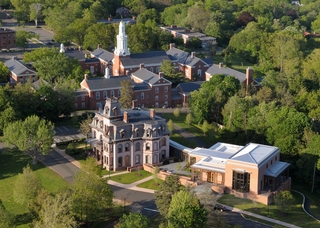Bush Tea and Archived Bodies: Plantation Returns as Forms of Healing
Abstract: The plantation as we often ‘see’ it in our minds, comes into view through the lenses of art and medicine. On the one hand, the plantation was imaged, and imagined, through the conventions of landscape representation. It provided artists with opportunities for observation while also presenting challenges for the organization of vision. On the other hand, it was also a site of scientific importance especially to physicians who traveled there to observe, assess, and diagnose unfamiliar signs, symptoms, and conditions. 1 In different ways it became a space for experimentation, both artistic and scientific, that often supported the economic goals of the plantation industrial complex. The shared reliance on visual acuity, or clarity, by both artists and doctors is mirrored in the plantation itself which was a cleared space organized around structures of surveillance and oversight. In turn these lines of sight often sustained the visual representation of the plantation landscape in the eighteenth and nineteenth centuries. Drawing on Katherine McKittrick’s idea of “plantation futures,” we need to consider the ongoing effect of these historical plantation imaginings. Their organization of vision and, management of people, continue to frame experiences, and practices, of healthcare in Black and Brown communities (communities whose lives have been marked by the trauma of unfree labor). However, the lines of sight and the forms of violence they shape is never the whole story. Drawing on Sylvia Wynter’s notion of the plot – a site where enslaved communities created, and drew on, practices of knowledge-sharing that relied on sustenance – I center the work of several contemporary artists who have returned to the site of the plantation, specifically the sites of formerly enslaved communities, as the ground for their artistic practice. This paper will consider the contemporary work of Annalee Davis (Barbados), Andrea Chung (Jamaica) and Jasmine Togo-Brisby (Queensland), alongside historical imagery and descriptions of enslaved communities. It considers the forms of their return, to the plantation, and describes the practices of restoration, restitution and healing they articulate, drawn from the communities of enslaved people they center, through their artistic production. Their work, in confronting the violence of these histories, is a form of curating/caring for the past, and the lives we can no longer see. By directly addressing the impact of these histories on our lives now, through an engagement with familial histories, these artists also compel us to see how writing (art) history and ‘doing’ health-work are intertwined. Their work shows us that the radical practices of care forged within Black, and Brown, diasporic communities are the means for reorientating our conceptions of health, healing, and medicine itself.
1. Ruha Benjamin, ed., “Naturalizing Coercion: The Tuskegee Experiments and the Laboratory Life of the Plantation,” in Captivating Technology: Race, Carceral Technoscience and Liberatory Imagination in Everyday Life (Durham N.C.: Duke University Press, 2019), 25–49; Britt Rusert, Fugitive Science: Empiricism and Freedom in Early African American Culture (New York: NYU Press, 2017).
Bio:
Anna Arabindan-Kesson is an assistant professor of Black Diasporic art with a joint appointment in the departments of African American studies and art and archaeology at Princeton University. Born in Sri Lanka, she completed undergraduate degrees in New Zealand and Australia and worked as a registered nurse before completing her Ph.D. in African American Studies and Art History at Yale University. Anna focuses on African American, Caribbean, and British Art, with an emphasis on histories of race, empire, medicine, and transatlantic visual culture in the long 19th century. Her first book, published with Duke University Press, is called Black Bodies White Gold: Art, Cotton and Commerce in the Atlantic World and she is also the director of the digital humanities project Art Hx: Visual and Medical Legacies of British Colonialism. She is at work on a second book called An Empire State of Mind: Plantation Imaginaries and British Colonialism.
